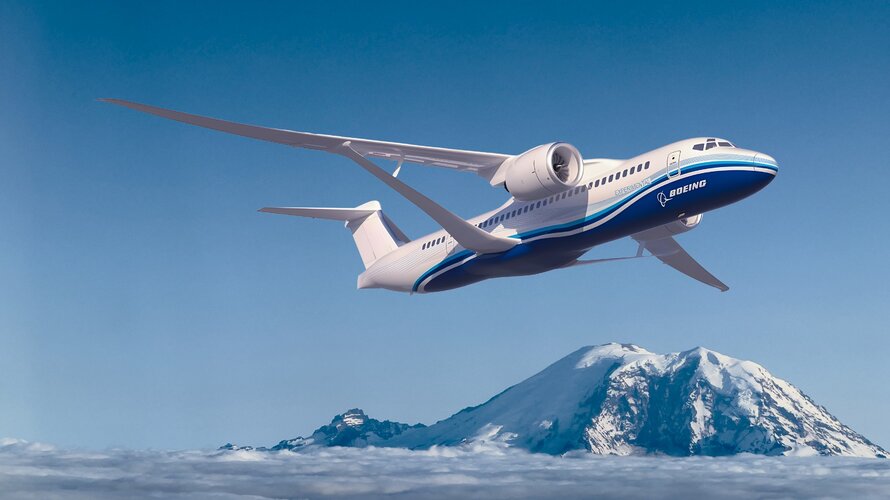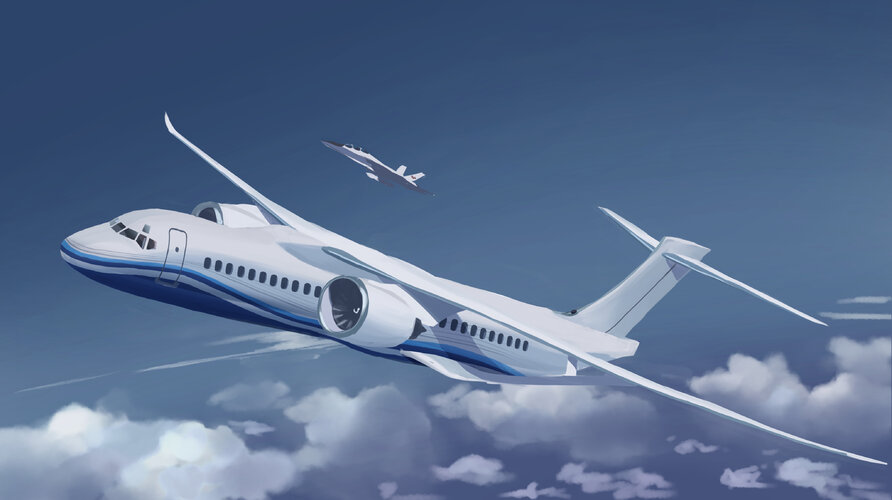You are using an out of date browser. It may not display this or other websites correctly.
You should upgrade or use an alternative browser.
You should upgrade or use an alternative browser.
Boeing Truss-Braced Wing concepts & X-66
- Thread starter Triton
- Start date
- Joined
- 4 July 2010
- Messages
- 2,514
- Reaction score
- 3,091
According to Boeing, they're waiting for the propulsion side of the industry to take it's next major step before they commit to a new airframe. So, we need to see how soon the unducted, or hydrogen, or ultra-high-bypass, or hybrid engines are ready.Assuming that Boeing rolls the dice and launches a 737 replacement based on this concept, what would be the timeframe for entry into service ? Late 2030's ?
- Joined
- 16 April 2008
- Messages
- 9,605
- Reaction score
- 14,493
According to Boeing, they're waiting for the propulsion side of the industry to take it's next major step before they commit to a new airframe. So, we need to see how soon the unducted, or hydrogen, or ultra-high-bypass, or hybrid engines are ready.Assuming that Boeing rolls the dice and launches a 737 replacement based on this concept, what would be the timeframe for entry into service ? Late 2030's ?
Can't imagine it will be hydrogen; the infrastructure hurdles are just too high. Same for hybrid, probably, though Boeing has combined this shape with hybrid-propulsion in SUGAR Volt. (The pods are batteries, apparently.)
So, my money would be on unducted fans or UHB (which are the same thing, aren't they?) But there's a lot of institutional resistance to anything that looks like a propeller.
- Joined
- 4 July 2010
- Messages
- 2,514
- Reaction score
- 3,091
UHB fans with ducts are definitely still a thing, so we might need to re-purpose a old phrase from Geometry and say "All Unducted are UHB, but not all UHB are Unducted."So, my money would be on unducted fans or UHB (which are the same thing, aren't they?) But there's a lot of institutional resistance to anything that looks like a propeller.According to Boeing, they're waiting for the propulsion side of the industry to take it's next major step before they commit to a new airframe. So, we need to see how soon the unducted, or hydrogen, or ultra-high-bypass, or hybrid engines are ready.Assuming that Boeing rolls the dice and launches a 737 replacement based on this concept, what would be the timeframe for entry into service ? Late 2030's ?
- Joined
- 4 July 2010
- Messages
- 2,514
- Reaction score
- 3,091
NASA never did upload the whole PC, but CNET did:
View: https://www.youtube.com/watch?v=3QgwRgbQX5Q
Notably they neither committed to nor ruled out asking the Air Force for an X-plane designation. They also left open the question of exactly what fuselage and engines the demonstrator aircraft will use.
Notably they neither committed to nor ruled out asking the Air Force for an X-plane designation. They also left open the question of exactly what fuselage and engines the demonstrator aircraft will use.
DrRansom
I really should change my personal text
- Joined
- 15 December 2012
- Messages
- 701
- Reaction score
- 302
This contract is essentially NASA and the US Government paying Boeing to resurrect its aircraft design ability. Critical for national security, but I would have preferred that it be accompanied by a commitment to fire the entire Boeing board.
- Joined
- 4 July 2010
- Messages
- 2,514
- Reaction score
- 3,091
Scott Manley weighs in. Added to this thread because he put some nice images in his presentation.
View: https://youtu.be/Xm5LYkGHkTc
taildragger
You can count on me - I won a contest
- Joined
- 2 November 2008
- Messages
- 404
- Reaction score
- 502
There's market pressure against anything that looks like a propeller also. One of the reason for the rapid adoption of regional jets was a passenger preference demonstrated in load factors and pricing power.According to Boeing, they're waiting for the propulsion side of the industry to take it's next major step before they commit to a new airframe. So, we need to see how soon the unducted, or hydrogen, or ultra-high-bypass, or hybrid engines are ready.Assuming that Boeing rolls the dice and launches a 737 replacement based on this concept, what would be the timeframe for entry into service ? Late 2030's ?
Can't imagine it will be hydrogen; the infrastructure hurdles are just too high. Same for hybrid, probably, though Boeing has combined this shape with hybrid-propulsion in SUGAR Volt. (The pods are batteries, apparently.)

So, my money would be on unducted fans or UHB (which are the same thing, aren't they?) But there's a lot of institutional resistance to anything that looks like a propeller.
- Joined
- 16 April 2008
- Messages
- 9,605
- Reaction score
- 14,493
View: https://twitter.com/ToughSf/status/1615453917298425856?t=HHOMLcUG1mlehik_9VSUEw&s=19I'd be very interested in seeing this configuration with a UHB (especially an unducted one)!
martinbayer
ACCESS: Top Secret
- Joined
- 6 January 2009
- Messages
- 3,397
- Reaction score
- 3,904
Now, by wholly unforced chosen education I'm just your average German good old fashioned rocket/hypersonic airbreathing propulsion aerospace engineering university graduate suburban kinda guy, but I still fail to understand what is the simple dumbed down explanation of how in the most sacred of all bovines electric whirligigs would/could replace good old fashioned fossile and/or LH2 fuel burning powered turbine based engines with respect to maintaining the current staunchly subsonic altitude/velocity airliner flight envelope vs. CO2 production?
Last edited:
Methane is cheap and harvested. Every cubic meter of it used as a fuel is one that is not ejected into the atmosphere with its known cascading effect.
Fuel cells usage of methane is also more efficient that burning it. You also restricts Nox production.
Methane can then be burned only for high load usage.
Fuel cells usage of methane is also more efficient that burning it. You also restricts Nox production.
Methane can then be burned only for high load usage.
- Joined
- 4 July 2010
- Messages
- 2,514
- Reaction score
- 3,091
The Air Current has a piece, paywalled though the opening few paragraphs are free
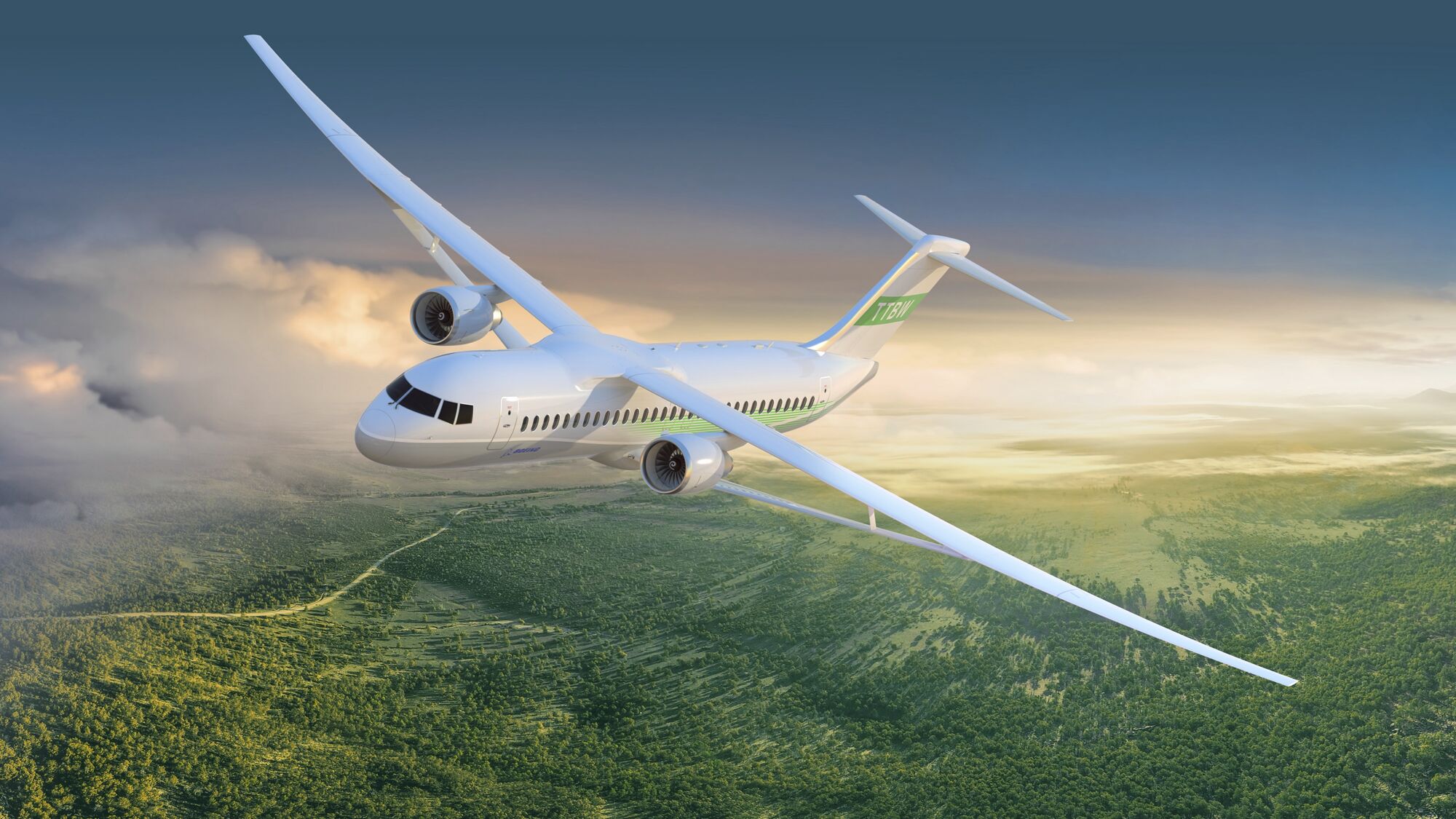
 theaircurrent.com
theaircurrent.com

NASA gives Boeing a second shot at reshaping commercial aviation
The U.S. puts its “finger on the scale” for new Boeing jetliner development. Company awarded $425 million to develop its truss-braced wing concept into Sustainable Flight Demonstrator for a 2028 first flight.
 theaircurrent.com
theaircurrent.com
martinbayer
ACCESS: Top Secret
- Joined
- 6 January 2009
- Messages
- 3,397
- Reaction score
- 3,904
That's fine, but I'd like to know what the projected top airspeed of any *exclusively* electric driven airplane engine would be.Methane is cheap and harvested. Every cubic meter of it used as a fuel is one that is not ejected into the atmosphere with its known cascading effect.
Fuel cells usage of methane is also more efficient that burning it. You also restricts Nox production.
Methane can then be burned only for high load usage.
Speed for electric aircraft is limited by the propulsion mode. Propeller ones are only limited like any other Propeller aircraft.
The difference is in range since electric propulsion is always confronted to power density.
The difference is in range since electric propulsion is always confronted to power density.
martinbayer
ACCESS: Top Secret
- Joined
- 6 January 2009
- Messages
- 3,397
- Reaction score
- 3,904
That's pretty much my understanding, so I remain mystified why there's speculation/chatter of all electric airliners when presumably purely electric propulsion will not be able to routinely match conventional turbofan powered airliner airspeeds of up to Mach 0.85.
Last edited:
Nik
ACCESS: Top Secret
- Joined
- 15 July 2009
- Messages
- 1,269
- Reaction score
- 1,062
(The pods are batteries, apparently.)
Am I alone in thinking that if those pods hold 'lithium' cells, would be wise to have a way to discard pods that spontaneously ignite ??
Equivalent of fuel-dump before emergency landings...
Am I alone in thinking that if those pods hold 'lithium' cells, would be wise to have a way to discard pods that spontaneously ignite ??
Equivalent of fuel-dump before emergency landings...
red admiral
ACCESS: Top Secret
- Joined
- 16 September 2006
- Messages
- 1,805
- Reaction score
- 2,377
From memory, the SUGAR Volt concept from 5-10 years or so ago depended on batteries with about 30x the current kWh/kg... Concepting is easy when you can use technology which doesn't exist yet
From the range of NASA studies it seemed that configuration changes for narrow bodies made pretty limited impact (<10% ish) compared to the more advanced tech assumptions that got you towards ~50% block fuel reductions.
It'll be interesting to see what works out best at full scale e.g. TTBW or the semi-aeroelastic wing
From the range of NASA studies it seemed that configuration changes for narrow bodies made pretty limited impact (<10% ish) compared to the more advanced tech assumptions that got you towards ~50% block fuel reductions.
It'll be interesting to see what works out best at full scale e.g. TTBW or the semi-aeroelastic wing
- Joined
- 4 July 2010
- Messages
- 2,514
- Reaction score
- 3,091
Boeing's Calhoun has declared the old "NMA" concept dead and the company seems to be embracing the idea of TTBW being the configuration for their next airliner.
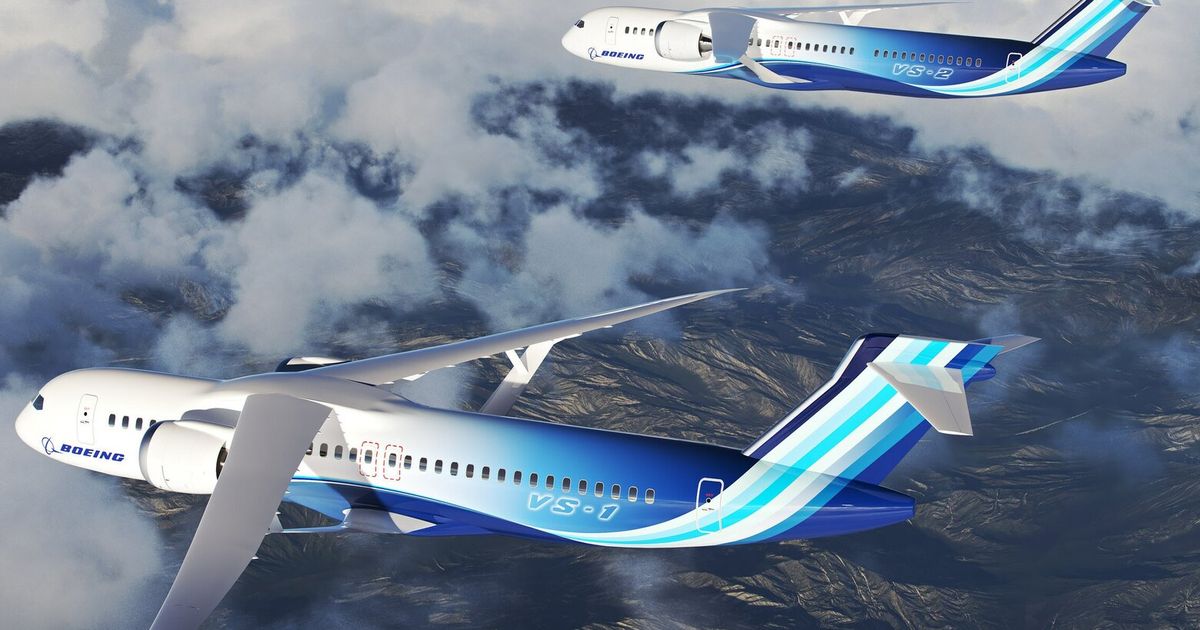
 www.seattletimes.com
www.seattletimes.com

Boeing CEO offers hints about next new airplane and a radical tech shift
Boeing CEO Calhoun expressed confidence in recovery and catching Airbus. He said a new airplane concept developed with NASA could produce Boeing's next new jet
alberchico
I really should change my personal text
- Joined
- 14 January 2014
- Messages
- 707
- Reaction score
- 1,513
Its going to be exciting to see this project take shape. Shame that we wont see it enter service until at least 2035. It also appears that Boeing will concentrate all their resources on developing this concept as a 737 replacement and will leave the 757 replacement market to the A321XLR.
- Joined
- 4 July 2010
- Messages
- 2,514
- Reaction score
- 3,091
The Boeing SFD is now the X-66A
View: https://twitter.com/AvWeekGuy/status/1668399965054603265?t=Af2aa59B0Bi3YB2j_UKyEQ&s=19
Should we rename this thread or start a new one specifically for the Sustainable Flight Demonstrator?
View: https://twitter.com/AvWeekGuy/status/1668399965054603265?t=Af2aa59B0Bi3YB2j_UKyEQ&s=19
Should we rename this thread or start a new one specifically for the Sustainable Flight Demonstrator?
1635yankee
Recovering aeronautical engineer
- Joined
- 18 August 2020
- Messages
- 554
- Reaction score
- 766
"Half the length of a football field"* isn't that big. Several current or recent production aircraft exceed that. What's novel is the very high aspect ratio.These ultra-thin folding wings measure more than half the length of a football field! Our new Transonic Truss-Braced Wing concept is revealed at #aiaaSciTech today. #TheFutureIsBuiltHere Read more: http://bit.ly/2VAnHks
aonestudio
I really should change my personal text
- Joined
- 11 March 2018
- Messages
- 2,964
- Reaction score
- 7,493

Next Generation Experimental Aircraft Becomes NASA’s Newest X-Plane
NASA and Boeing said Monday the aircraft produced through the agency’s Sustainable Flight Demonstrator project has been designated by the U.S. Air Force as the X-66A.
Yes, 180 ft is big. Both 737 and A320 are a little under 118 ft, so unless they fold it’s a problem to use existing gates (777X had this problem as well). Pretty much all of those bigger wings you reference are on twin aisle aircraft that use a different gate spacing."Half the length of a football field"* isn't that big. Several current or recent production aircraft exceed that. What's novel is the very high aspect ratio.These ultra-thin folding wings measure more than half the length of a football field! Our new Transonic Truss-Braced Wing concept is revealed at #aiaaSciTech today. #TheFutureIsBuiltHere Read more: http://bit.ly/2VAnHks
What’s novel about these very high aspect ratio wings is that they’re transonic. That causes all kinds of fun aeroelastic stuff, as do folding tips. It’s probably impossible to make them out of metal, but with composites you can do some neat stuff that makes it possible. The other issue would be handling qualities which would be a bit different from current wings, but again with FBW some of the nastier things can be mitigated.
Last edited:
Because it’s available. Most of the 737NG’s are still in use, Max’s can’t get delivered fast enough so you’d be left with a classic if you went the 737 route. The MD90’s on the other hand are being retired and not converted into cargo jets like many of the NG’s are. So, it’s a bit easier to get ahold of one and Boeing would rather want to make money on a cargo conversion for an NG.Why are they using an old MD90 and not something newer like a 737 airframe?
- Joined
- 24 November 2008
- Messages
- 1,549
- Reaction score
- 2,612
- Joined
- 1 May 2007
- Messages
- 2,595
- Reaction score
- 1,965
Also, I'm thinking that the T-Tail keeps the tailplane out of the way of any 'unexpected' airflow conditions generated by the high mounted wing and engines, as well as the struts . . .Because it’s available. Most of the 737NG’s are still in use, Max’s can’t get delivered fast enough so you’d be left with a classic if you went the 737 route. The MD90’s on the other hand are being retired and not converted into cargo jets like many of the NG’s are. So, it’s a bit easier to get ahold of one and Boeing would rather want to make money on a cargo conversion for an NG.Why are they using an old MD90 and not something newer like a 737 airframe?
cheers,
Robin.
- Joined
- 16 April 2008
- Messages
- 9,605
- Reaction score
- 14,493
Also, I'm thinking that the T-Tail keeps the tailplane out of the way of any 'unexpected' airflow conditions generated by the high mounted wing and engines, as well as the struts . . .
Just so. Most high-wing jets with engines on the wings have T-tails to get the horizontal stabilizers out of the engine exhaust flow. And Boeing has been showing their truss-braced wing designs as high wings with T-tails since at least SUGAR High (2008), so I doubt it's a coincidence that they selected a T-tail aircraft as the basis for the demonstrator.
Last edited:
Actually, horizontals positioned in the wing down wash is considered beneficial for stability and control since they increase the effective AOA and the effectiveness of the surface. As @TomS pointed out it does keep them out of the engine exhaust, particularly the hot core gases which composites generally don’t like. T tails don’t come without their issues, namely deep stall, where the wing/fuselage can blank out the horizontal, where a conventional horizontal will see “clean air” at higher AOA and maintain effectiveness. There’s no free lunch!Also, I'm thinking that the T-Tail keeps the tailplane out of the way of any 'unexpected' airflow conditions generated by the high mounted wing and engines, as well as the struts . . .Because it’s available. Most of the 737NG’s are still in use, Max’s can’t get delivered fast enough so you’d be left with a classic if you went the 737 route. The MD90’s on the other hand are being retired and not converted into cargo jets like many of the NG’s are. So, it’s a bit easier to get ahold of one and Boeing would rather want to make money on a cargo conversion for an NG.
cheers,
Robin.
- Joined
- 16 April 2008
- Messages
- 9,605
- Reaction score
- 14,493
I will be interested to see how they process for the wing relocation from bottom to top (DC9 have low mounted ones).
It looks like the trusses attach to the old low wing mounting points. Given that they are cutting the fuselage to remove a section, adding internal structure there to connect the new high wing to the fuselage seems obvious. I wonder if the primary loads might not be through the trusses, though, into the old main wing structure.
- Joined
- 16 April 2008
- Messages
- 9,605
- Reaction score
- 14,493
T tails don’t come without their issues, namely deep stall, where the wing/fuselage can blank out the horizontal, where a conventional horizontal will see “clean air” at higher AOA and maintain effectiveness. There’s no free lunch!
Indeed. Deep stall characteristics seem to be one of the main focus areas for future research.

Predicting Buffet Onset on the Transonic Truss-Braced Wing
Boeing will work with NASA to build, test, and fly a full-scale demonstrator aircraft and validate technologies aimed at lowering emissions.
Nice find @TomS!Indeed. Deep stall characteristics seem to be one of the main focus areas for future research.

Predicting Buffet Onset on the Transonic Truss-Braced Wing
Boeing will work with NASA to build, test, and fly a full-scale demonstrator aircraft and validate technologies aimed at lowering emissions.www.techbriefs.com
- Joined
- 16 April 2008
- Messages
- 9,605
- Reaction score
- 14,493
there is not much of a load bearing structure on the upper part of the fuselage here.
True. It's possible that they will simply "cheat" and build an internal frame to carry the loads down from the top of the fuselage to the existing load structures in the lower fuselage. After all, this experimental aircraft doesn't need to have a clear cabin for passengers anymore.
A commercial version would need a different load structure entirely. And that is one item I've seen mentioned as an issue -- you end up with a rather strong and relatively heavy structure sitting at the top of the fuselage, ready to come down into the cabin in a crash.
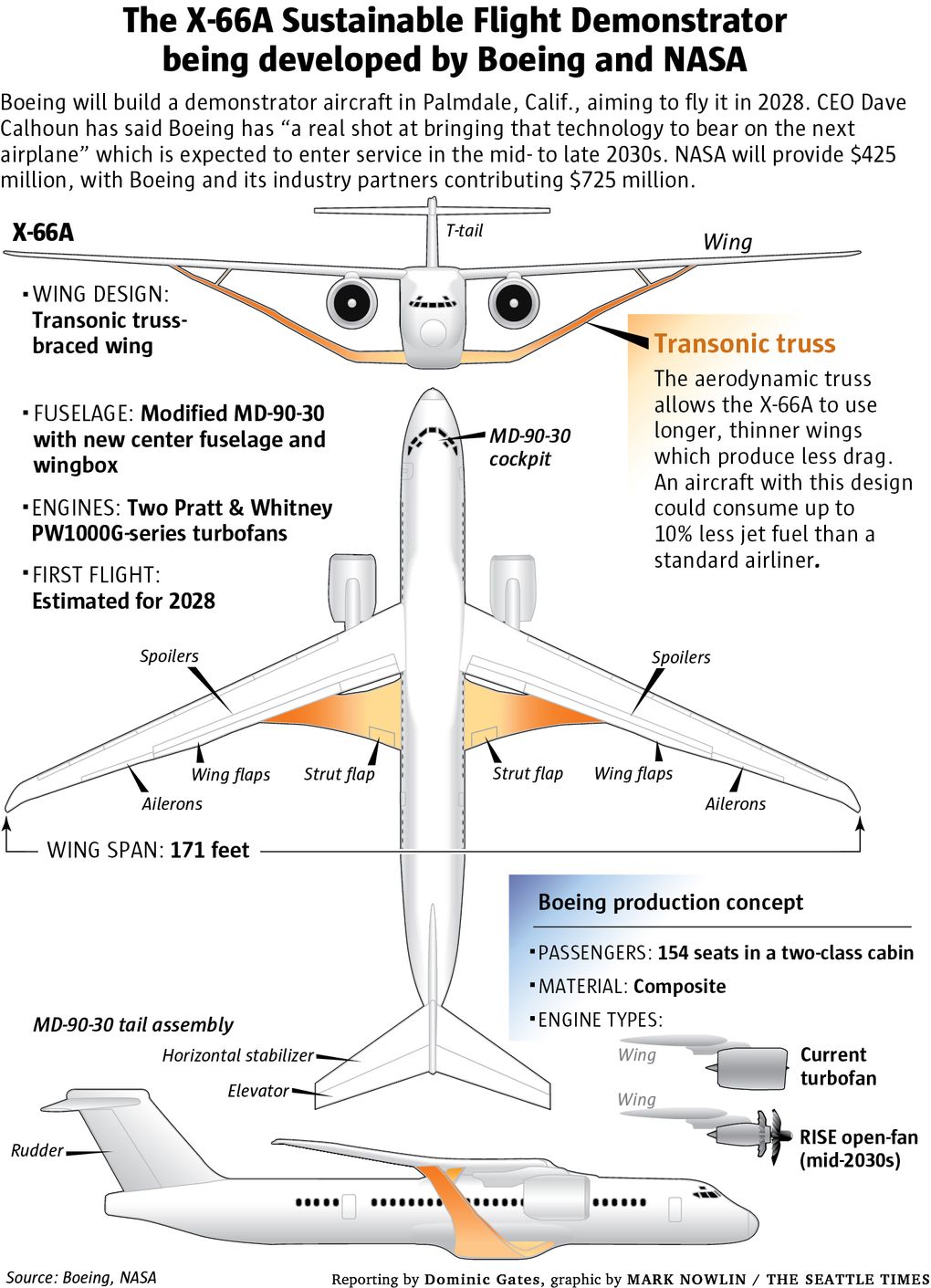
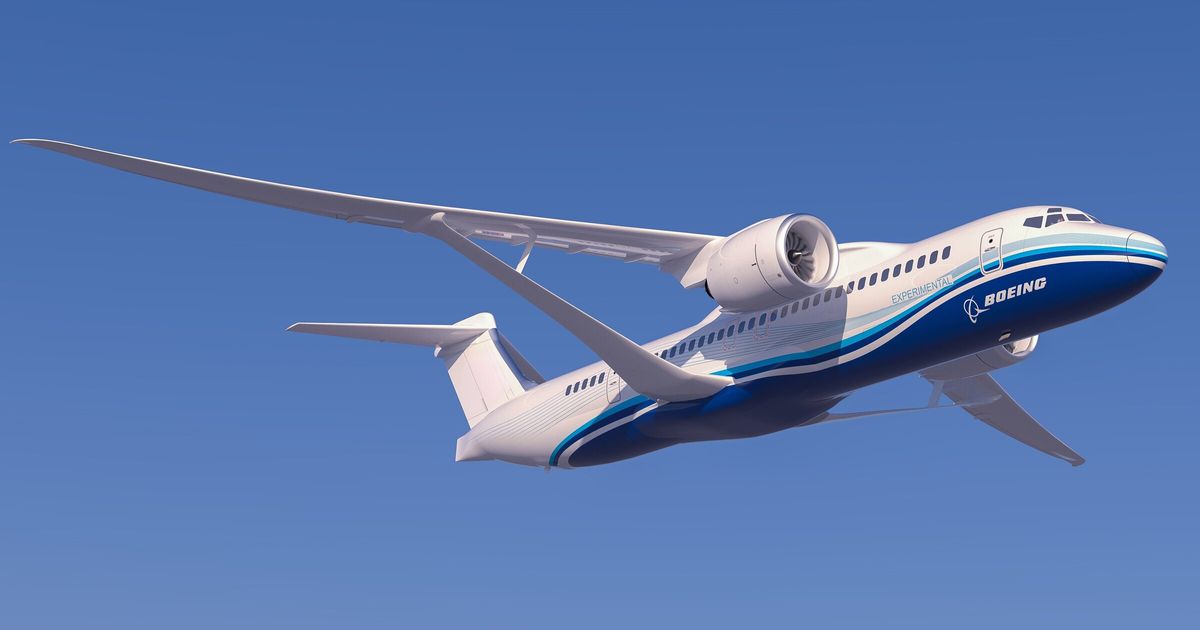
In Paris, Boeing leader teases eye-catching new airplane concept
Boeing is seriously considering a specific innovation for its next new-design airplane that it will develop to enter service in the mid-to-late 2030s.
Similar threads
-
-
NEWS: Clean engines, wings that fold: Boeing dreams of futuristic jets
- Started by Sentinel Chicken
- Replies: 2
-
-
Planes of the Future: Boeing's 1950 jet-transport designs
- Started by overscan (PaulMM)
- Replies: 1
-

